AI Agents in Business: 50 Key 2025 Statistics and Insights
In the case of AI agents, statistics tell a bigger story than numbers. Therefore, this article is not only about stats.
It’s 👇
- (Data) The most important statistics for AI agents in 2025.
- (Insight) What these statistics tell us about where things are going.
- (Actions) How businesses should react to stay ahead.
At Big Sur AI, we understand firsthand how agents can drastically change how a business operates and provide customers with improved experiences.
Before we dive in, here’s a summary of our findings 👇
| Category | Key Statistics / Facts | Business Insight / Action |
|---|---|---|
| 🚀 Growth Trends |
• 82% of companies globally are using or exploring AI • 25% of enterprises will deploy autonomous AI pilots by 2025, 50% by 2027 • 92% of companies plan to boost AI spending in next 3 years • Only 1% feel “AI mature” |
AI adoption is mainstream but still early-stage. Invest now to lead before integration becomes standard. Companies that scale AI early can leap ahead. |
| Market Expansion & Investment Boom |
• Global AI agents market will reach $7.6B in 2025 • Projected $47B by 2030 (45.8% CAGR) • $3.8B in VC funding in 2024 (tripled YoY) • US leads with ~40% of revenue; APAC fastest growing |
Massive investment signals confidence and rapid innovation. Now is the time to partner with vendors or build in-house expertise to stay ahead. |
| Broad Enterprise Uptake on the Horizon |
• 85% of enterprises will be using AI agents by end of 2025 • Adoption is spreading beyond tech giants |
Treat AI agents as a strategic imperative. Plan for org-wide integration in budgets and talent. Delaying adoption risks falling behind competitors. |
| 📈 Adoption and Usage Statistics |
• 42% of large enterprises deploy AI, 40% experimenting (~82% engaged) • 9 in 10 see AI as crucial for competitive edge • Only 1% have fully scaled AI |
Most companies are piloting, but few have scaled. Start with high-impact pilots and plan to scale for real advantage. |
| SMBs Embracing AI |
• 75% of SMBs experimenting with AI • 83% of high-growth SMBs using or piloting AI • US small-business use doubled from 23% to 40% (2023–2024) • 91% expect AI to drive growth |
AI is leveling the playing field. SMBs should adopt AI tools now to compete effectively and grow without proportional staffing costs. |
| Enterprise vs. Mid-Market Gap |
• 50%+ of 5,000+ employee firms use AI • 60%+ of 10,000+ employee firms • Only ~10% of mid-sized firms (250+ employees) have implemented AI |
Mid-sized firms risk falling behind. Adopt proven solutions in priority departments to close the gap and meet customer expectations. |
| 🧑💻 Customer Service & Support |
• 80% of companies using/planning AI-powered chatbots by 2025 • 81% of contact centers use AI behind the scenes • AI will eventually be in nearly 100% of customer interactions • Cuts response times 30%, resolves tickets 50% faster |
Deploy conversational bots and agent assistants to improve service quality, speed, and reduce costs. Start with automating common support requests. |
| Marketing & Sales |
• 88% of marketers use AI daily • 93% use AI for faster content generation • 69% of retailers see significant revenue growth from AI personalization • Verizon saw +40% sales with AI agent support |
Use AI for content, lead qualification, and personalization. Boost conversion rates and enable sales teams to focus on closing deals. |
| Retail |
• 76% of retail firms increasing AI agent investment • Nearly 7 in 10 see revenue gains from AI personalization |
Retailers should deploy AI for personalized journeys and post-sale support. Increases sales, loyalty, and reduces manual service workload. |
| Manufacturing & Operations |
• 77% of manufacturers adopted AI by 2024 (up from 70% in 2023) • Predictive maintenance cuts unplanned downtime ~40% |
Use AI for monitoring, preventive maintenance, and quality control. Pilot systems to reduce costs and improve operational reliability. |
| Financial Services |
• 20% of global AI spending increase between 2024–2028 • 69% use AI for data analytics, 57% for processing, 46% for LLMs • Profitability boost projected at 38% by 2035 |
Adopt AI for customer support, robo-advisors, fraud detection. Use advanced analytics to improve decisions and customer service. |
| Healthcare |
• 90% of hospitals worldwide adopting AI by 2025 • Up to 80–90% of clinical documentation tasks automated • Diagnostic agents analyze data 95% faster |
Deploy AI agents for intake, documentation, and diagnosis support. Frees staff time and improves care accuracy and throughput. |
| 💰 ROI and Business Impact |
• 91% of SMBs using AI report revenue boost • 86% see improved profit margins • Verizon and retail use cases show 6–40% revenue uplift |
Target AI to revenue and efficiency hotspots. Even modest deployments can deliver outsized ROI, especially for growth-focused firms. |
| Productivity Gains |
• AI boosts employee productivity ~40% on average • Marketing teams see 60% higher output with AI • Support teams cut first-response times 37%, resolve 52% faster |
Identify time-consuming tasks to automate. Free up staff for strategic work and scale without equivalent hiring. |
| ROI Challenges & Long-Term Commitment |
• 65% of CFOs cite insufficient ROI as barrier • Only 13% report “very positive” ROI so far • 78% plan to increase AI investments next year |
Focus on quick-win projects for early ROI. Pair with long-term strategy to capture compounding value as AI integrates deeper. |
| High-ROI Use Cases |
• $3.5 average return for every $1 invested in AI • Top 5% of companies see $8 ROI per $1 • 80% of marketers say AI exceeded ROI expectations |
Prioritize high-ROI use cases (customer service, marketing automation). Track metrics to optimize value and build buy-in for expansion. |
| 😍 User & Employee Preferences |
• 94% of employees familiar with gen AI tools • 13% using AI for 30%+ of tasks • 47% expect >⅓ of work will be AI-supported within a year |
Employees are eager for AI. Enable them with tools and training, and formalize their bottom-up adoption for greater efficiency. |
| Customer Openness & Concerns |
• 39% comfortable with AI scheduling for them • 34% prefer AI if it avoids repeating info • 76% worry about new data security risks |
Be transparent about AI use. Offer human handoffs and clear data policies to maintain trust while delivering faster, personalized service. |
| Leadership Alignment |
• Employees and customers are more ready for AI than many leaders assume • Leadership is critical for successful adoption |
Leaders should champion AI adoption, invest in training, and align technology with employee and customer needs for sustainable success. |
🚀 Growth Trends
AI agents' adoption is skyrocketing
TL;DR → Businesses are rapidly embracing AI agents.
- Over 82% of companies globally are either utilizing or actively exploring the use of artificial intelligence (AI) within their business operations.
- Deloitte projects that 25% of enterprises using generative AI will deploy autonomous “agentic” AI pilots by 2025, rising to 50% by 2027.
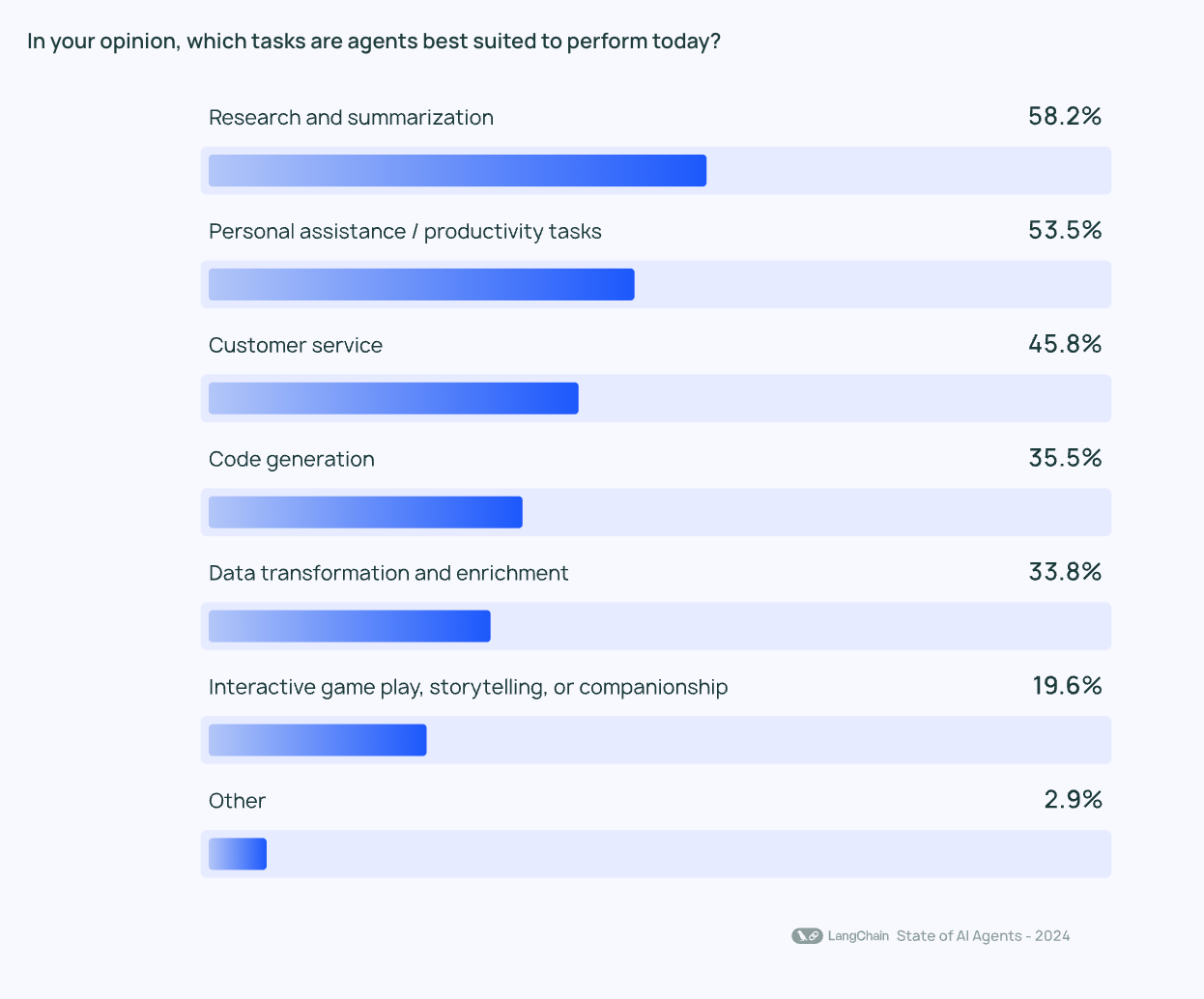
Likewise, overall investment is booming 👇
92% of companies plan to boost AI spending in the next three years.
- Nearly all firms are investing in some form of AI, yet only 1% consider themselves fully AI-mature (with AI deeply integrated).
💡 Insight: The steep growth curve means even cautious industries are moving toward AI autonomy. Companies should invest early in AI agents to ride this wave, or risk falling behind more AI-driven competitors.
Because so few have achieved full AI integration, there’s still an opening now to become a leader by aggressively scaling AI across workflows.

Market Expansion and Investment Boom:
TL;DR → AI agent enablers are being swarmed with funding.
- Analysts estimate the global AI agents market will reach $7.6 billion in 2025 (up from $5.4 billion in 2024).
- The global AI agents market is estimated to reach $47 billion by 2030 (a 45.8% CAGR from 2025).
Venture capital is pouring in as well ⤵️
AI agent startups raised about $3.8 billion in 2024, nearly triple the previous year’s funding.


- The U.S. currently leads with ~40% of global AI agent revenue, while Asia–Pacific is the fastest-growing region.
💡 Insight: Surging market size and investment signal strong confidence in AI agents’ future. Now is an ideal time to partner with emerging AI vendors or build in-house capabilities.
The abundant funding also means faster innovation, so staying informed on new AI agent tools will help companies capitalize on the latest efficiency or customer-service improvements before competitors do.
Broad Enterprise Uptake on the Horizon
TL;DR → AI agents are quickly becoming mainstream in enterprise tech roadmaps.
- 85% of enterprises will be using AI agents in some form by the end of 2025.
In other words, adoption is not limited to tech giants. It’s spreading across industries and company sizes.
💡 Insight: This ubiquity underscores that AI agents are no longer experimental fringe tech; they are expected to be a standard tool in the business toolkit. Decision-makers should plan for organization-wide AI integration (in budgets, talent, and strategy) in the near term.
As AI agents become as common as cloud or mobile technology, those who delay integration risk their processes and customer offerings looking outdated.
The takeaway: treat AI agent capability as a strategic imperative, not a curiosity.
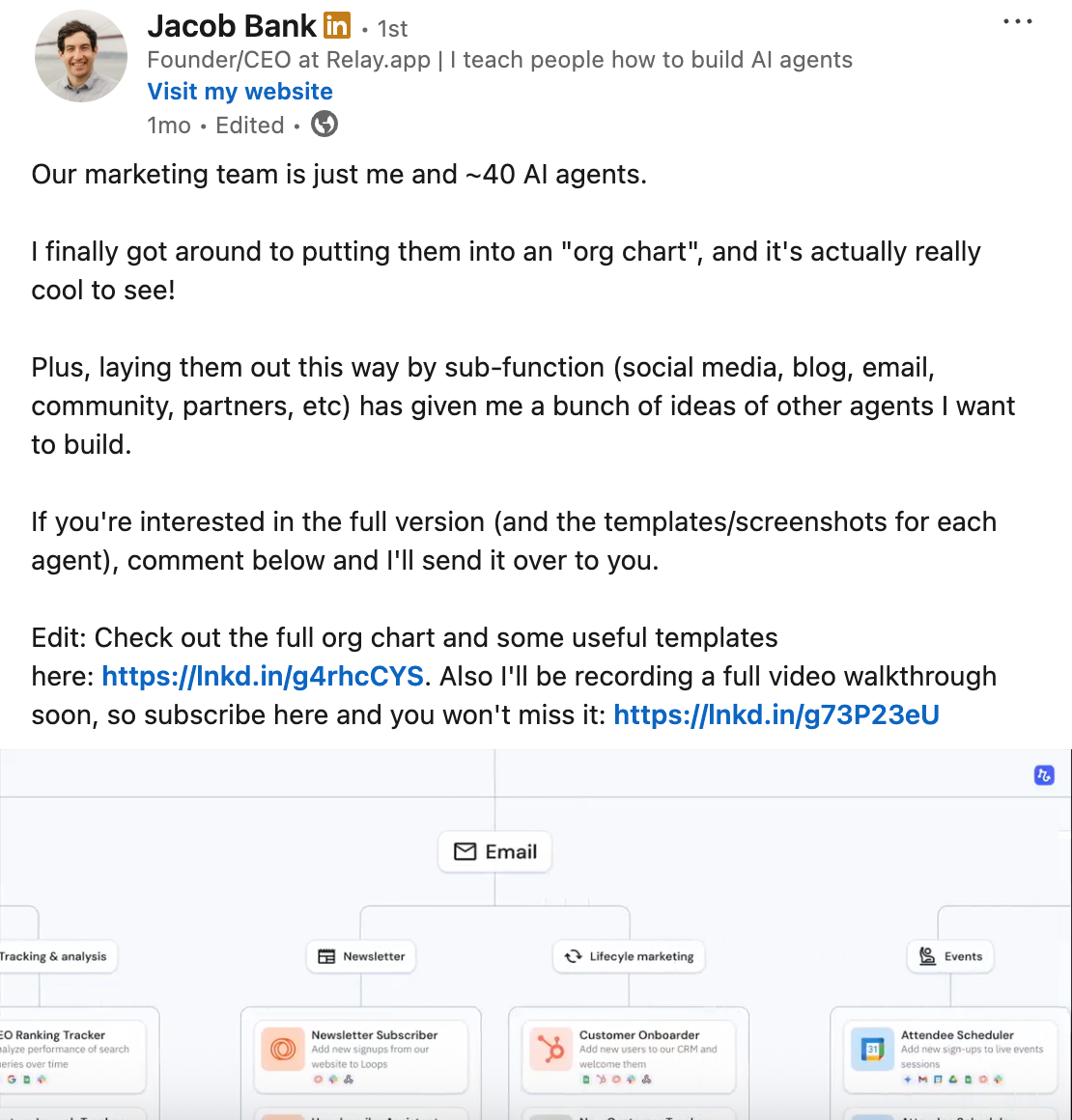
📈 Adoption and Usage Statistics
Majority Adoption with Room to Grow
TL;DR → A clear majority of businesses are now either using or exploring AI solutions.
- By the end of 2024, 42% of large enterprises (1000+ employees) reported deploying AI in some capacity, and another 40% are experimenting with it, totaling ~82% engaged. This spans both advanced AI agents and simpler automation bots.
- 9 in 10 organizations view AI as crucial for gaining a competitive edge.
‼️ However, very few companies have fully scaled AI across all operations (recall only 1% feel “AI mature”).
💡 Insight: The data shows AI has entered the business mainstream. If your company isn’t at least piloting AI solutions, you’re in a shrinking minority.
At the same time, fully realizing AI’s potential remains rare, so adopting AI now can help differentiate your business.
Companies should start with pilot projects in high-impact areas (e.g. customer service chatbots or AI-assisted analytics) to catch up to the 80% of peers already on this journey, and then aggressively scale successful pilots for competitive advantage.
Perhaps even leverage consultants and experts who specialize in building and operating agents.
SMBs Embracing AI (Not Just Big Enterprises)
TL;DR → Smaller businesses are actively adopting AI as well, and are replacing hiring human labor with agents.
- A global survey of 3,350 SMB leaders found 75% of small and mid-size businesses are at least experimenting with AI, with high-growth SMBs leading the way (83% of growing firms use or pilot AI).
- In the U.S., the share of small businesses using generative AI nearly doubled from 23% in 2023 to 40% in 2024.
- Notably, 91% of these small-business adopters expect AI to drive business growth.
💡 Insight: AI is “leveling the playing field” for smaller companies. SMBs can leverage readily available AI tools (for marketing content, chatbots, etc.) to achieve capabilities that once only large enterprises could afford.
The strong revenue optimism among small firms using AI suggests that even basic automation or AI assistants can yield outsized benefits.
‼️ Actionable tip: If you’re an SMB, don’t wait to try AI. Start with one or two tools (like an AI CRM assistant or an inventory optimizer) that can free up staff time or improve customer experience.
Early adoption could translate into faster growth and efficiency gains that help you compete with larger players.
Enterprise vs. Mid-Market Gap
TL;DR → Adoption rates do vary by company size. Larger enterprises and SMBs have pulled ahead, while many mid-market firms lag.
- In the U.S. over 50% of companies with 5,000+ employees have implemented AI, and among the largest (10,000+ employees) over 60% have done so.
- By contrast, only around 10% of mid-sized businesses (250+ employees) have implemented AI so far.
💡 Insight: This gap suggests mid-tier companies may be slower due to resource constraints or uncertainty, but it also means an opportunity for mid-sized firms to catch up. If you’re in that mid-market category, consider that your bigger competitors are already reaping AI’s benefits (automation, better insights, cost savings).
‼️ Closing the gap can be as simple as adopting proven AI solutions in one department (e.g. automated customer support or AI-driven forecasting in finance) to start. Many AI tools today are cloud-based and cost-effective, so mid-sized organizations should prioritize AI adoption in 2025 to avoid falling behind in efficiency and customer expectations set by the larger firms.
🧑💻 Usage by Function or Industry (Customer-Facing and Internal)
Customer Service & Support – Chatbots and Agent Assistants
TL;DR → AI has quickly become the backbone of customer service operations. Almost all customer support teams utilize AI agents in some form.
- 80% of companies are using or planning to deploy AI-powered chatbots for customer service by 2025.
These AI agents handle FAQs, routing, and even complex inquiries 24/7. Importantly, AI isn’t only facing customers.
- 81% of contact centers use AI behind the scenes (for training staff or providing agent coaching and insights) to improve service quality.
- Gartner predicts AI will eventually play a role in nearly 100% of customer interactions, whether through direct chatbot engagement or assisting human reps.
💡 Use-case insight: Deploying AI in customer support can drastically cut response times and operating costs. Businesses report AI chatbots have reduced first-response times by over 30% and help resolve tickets 50% faster in some cases.
‼️ Action: Every company with a customer support function should evaluate AI solutions (like conversational bots or AI “co-pilots” for agents). These tools scale service efficiently, offering instant answers and consistent support, which improves customer satisfaction.
Start by automating common support requests; this frees human agents to focus on high-value or complex customer issues, thereby improving overall service without the need to add headcount.
Marketing & Sales – Content, Personalization, and Sales Agents
TL;DR → Adoption of AI in marketing and sales is extremely high and delivering tangible ROI.
- 88% of marketers now use AI in their day-to-day roles, with 93% using AI to generate content faster (e.g. for social media, blogs, emails).
In sales and e-commerce, AI agents are driving personalization and upsells ⤵️
- 69% of retailers using AI agents report significant revenue growth thanks to personalized shopping experiences.
Companies are also deploying AI sales assistants:
Verizon, for example, rolled out an AI agent to support its 28,000 customer reps and saw nearly a 40% increase in sales by streamlining call handling and allowing reps to focus on closing deals.

And it’s not just isolated cases; many firms are formalizing this trend.
- 35% of Chief Revenue Officers will establish dedicated “GenAI” teams by 2025 to integrate AI into sales ops, and businesses using these AI agents already see a 6–10% uplift in revenue on average.
💡 Use-case insight: AI can turbocharge marketing and sales through automation and smarter targeting. Marketers can leverage AI tools to produce and A/B test content in a fraction of the time, and sales teams can use AI to qualify leads or suggest next-best offers automatically.
‼️Action: If you’re in marketing, consider AI copywriting and campaign optimization tools to increase output and personalization.
If you’re in sales, explore AI assistants that log calls, draft follow-up emails, or analyze customer sentiment.
These agents not only save time but also improve outcomes (more leads converted, higher engagement), directly boosting top-line performance.
Traditional Industries like Retail, Manufacturing, Finance, Healthcare
TL;DR → AI agent adoption spans virtually all sectors, with different emphases by industry:
Retail
TL;DR → Besides chatbots for service, retailers employ AI agents for supply-chain optimization and personalized promotions.
- 76% of retail companies are increasing investment in AI agents over the next year specifically to enhance customer service (e.g. automated order tracking, inquiry handling).
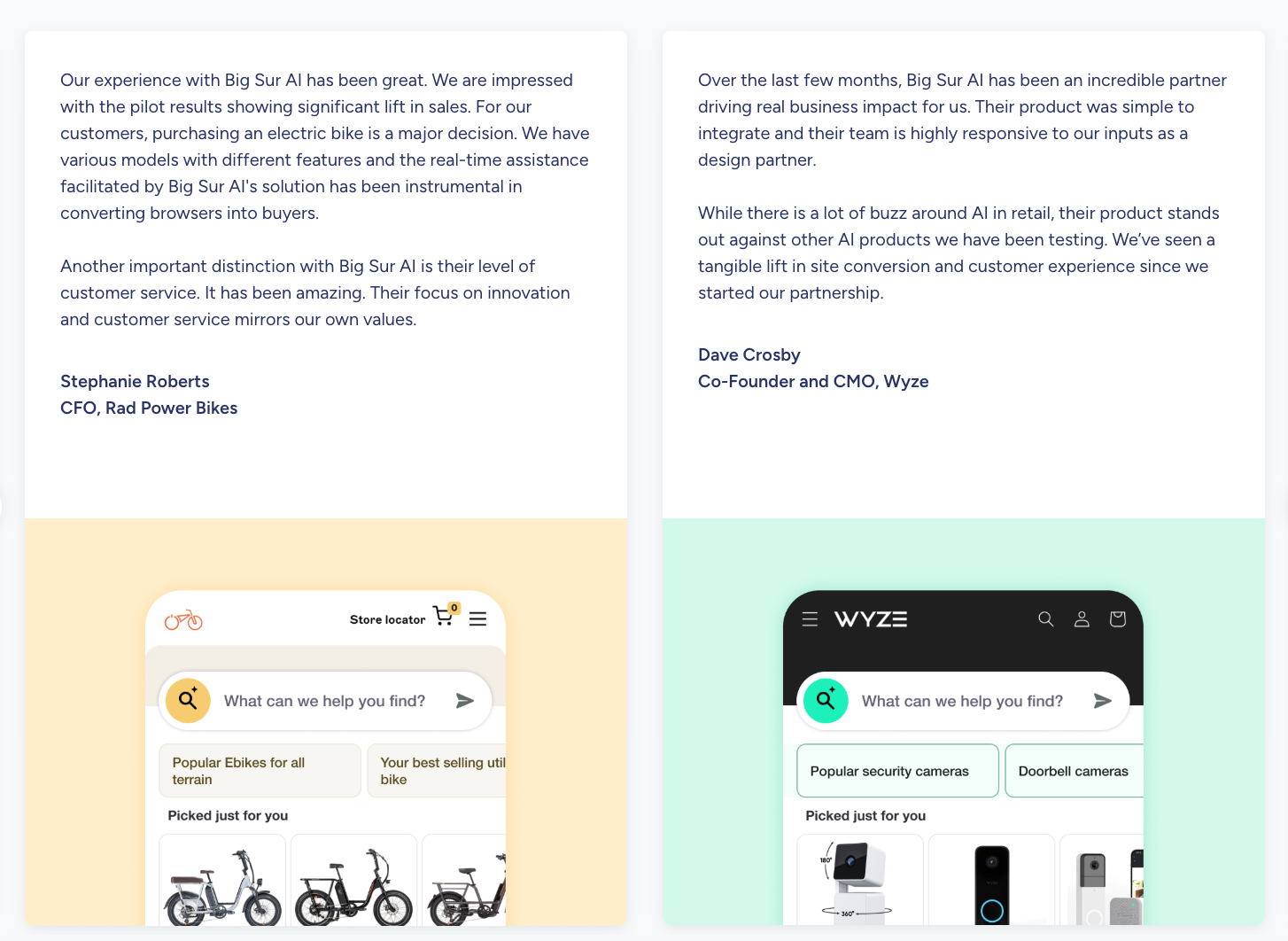
This is driven by clear ROI ⤵️
- Personalized AI recommendations and service bots are lifting sales, with nearly 7 in 10 retailers seeing revenue gains from AI-driven personalization.
‼️ Actionable tip: Retailers should deploy AI to personalize the customer journey at scale (product recommendations, tailored marketing) and automate post-sale support.
These agents improve customer experience and loyalty while freeing staff from repetitive queries, which directly translates into higher sales and retention.
Here’s an example of Rad Bikes using Big Sur AI to lift sales and support visitors 24/7 👇


Manufacturing & Operations
TL;DR → Industrial companies are leveraging AI agents for process automation, quality control, and predictive maintenance.
- 77% of manufacturers had adopted AI by 2024, up from 70% in 2023, indicating rapid uptake in operations.
Common uses include AI vision systems on production lines, smart inventory management, and maintenance agents that predict equipment failures.
- AI-driven predictive maintenance has reduced unplanned downtime by ~40% in early-adopting manufacturing firms.
‼️ Actionable tip: Manufacturers should integrate AI for monitoring and maintaining equipment and supply chains.
Even a pilot AI system that analyzes sensor data to schedule preventive maintenance can cut costs significantly and avoid costly outages.
For any business with heavy operations (factories, logistics, etc.), AI agents can optimize scheduling, detect anomalies, and improve safety – yielding substantial efficiency gains and cost savings on the shop floor.
Financial Services
TL;DR → Banks, insurers, and financial firms have been early adopters of AI agents to improve data analysis, customer service (e.g. automated advisors), and risk management.
- Between 2024 and 2028, the finance sector is projected to account for 20% of the global increase in AI spending, reflecting its heavy investment.
- Today, 69% of financial services organizations use AI for data analytics, 57% for data processing, and 46% are already working with large language models for tasks such as report generation and customer chatbots.
The payoff is significant 👇
- Integrating AI agents is expected to boost financial institution profitability by 38% on average by 2035 (through improved efficiency and new services).
‼️ Actionable tip: Financial companies should continue to deploy AI in customer-facing roles (chatbots for basic banking inquiries, robo-advisors in wealth management) as well as internal ones (fraud detection, compliance automation).
Other industries can learn from finance’s lead here – any business rich in data can use AI agents to analyze large datasets for insights or to automate high-frequency decision-making. The result is faster service for customers and more informed strategic decisions, improving both customer satisfaction and the bottom line.
Healthcare:
TL;DR → Healthcare providers are increasingly turning to AI agents to augment staff and improve patient outcomes.
- By 2025, 90% of hospitals worldwide are expected to adopt AI agents for uses such as predictive analytics in diagnosis and automating administrative workflows.
One impactful application is in clinical documentation: AI medical scribe agents (listening during visits and updating records) are now automating a large portion of routine paperwork.
- In some cases up to 80–90% of documentation tasks are automated through agents.
- Additionally, AI diagnostic agents help analyze medical images or patient data 95% faster and sometimes more accurately.
‼️ Actionable tip: Organizations in healthcare (and similarly, in any data-intensive professional field like law or consulting) should deploy AI agents to handle laborious, error-prone tasks – for example, transcribing notes, filling forms, or parsing test results.
This not only reduces workload and burnout for professionals but also improves accuracy and consistency. For healthcare specifically, freeing up clinicians from keyboard time means more focus on patient care, which improves quality and throughput.
Companies in regulated industries adopting AI should also invest in governance (to ensure compliance and ethical use). Still, the productivity and quality gains from well-governed AI agents are becoming too large to ignore.
💰 ROI and Business Impact
Revenue Growth and Cost Savings for Early Adopters
TL;DR → Companies adopting AI agents are already seeing measurable financial returns.
- 91% of SMBs using AI report that it’s boosting their revenue, and 86% say AI has improved their profit margins.
- Small businesses credit AI with helping scale their operations (87% cite this) by automating tasks and serving more customers without a proportional increase in headcount.
On the enterprise side, firms using generative AI agents in sales and service have documented tangible top-line impacts (e.g. the Verizon case with +40% sales or retailers’ +6-10% revenue lifts from AI).
💡 Insight: The ROI is real – AI agents can directly drive more sales and higher productivity, which flows to the bottom line. For businesses, the key lesson is to target AI projects at areas that drive revenue or improve efficiency.
‼️ For example, an AI that personalizes marketing can increase conversions, or a service chatbot that handles thousands of queries can save numerous salary hours.
Even modest AI deployments (like an AI scheduling assistant or recommendation engine) can have an outsized impact on revenue and costs, especially for growing businesses that need to do more with lean teams.
The data suggests that those who lean in to AI early are reaping financial rewards that can be reinvested to further their lead.
Productivity Gains and Efficiency Improvements
TL;DR → AI agents significantly amplify employee output and streamline operations.
- Studies estimate that AI could boost employee productivity by ~40% on average as it gets integrated into workflows.
- We’re already seeing examples: in marketing departments, pairing humans with AI agents led to a 60% increase in productivity per worker, with marketers producing higher-quality content faster (and getting better click-through rates) when assisted by generative AI.
- In customer support, companies using AI report metrics like a 37% drop in first-response times and tickets resolved 52% faster compared to those without automation.
AI is also reducing error rates and freeing employees from low-value tasks, effectively multiplying the impact of each team member.
💡 Insight: These efficiency gains mean fewer resources are needed to achieve the same (or better) output, translating to cost savings or capacity to take on more business. To leverage this, businesses should identify repetitive, time-intensive tasks across all departments – whether it’s an analyst cleaning data or an HR rep screening resumes – and apply AI tools to automate or assist in those tasks.
‼️ By reclaiming 30-60% of employees’ time, companies can reassign staff to higher-value projects, boost innovation, and handle growth without proportional cost increases. In summary, investing in AI for productivity is akin to investing in your workforce’s capabilities – it’s a force multiplier that can dramatically improve operational performance.
ROI Challenges and Long-Term Commitment
TL;DR → While many companies see positive results, not everyone achieves immediate ROI, and executives are mindful of this.
- A late-2024 survey of CFOs found that 65% of CFOs cite insufficient return on investment as a significant barrier to wider AI deployment.
- In fact, only 13% of CFOs reported a “very positive” ROI from generative AI so far (down from 27% earlier in the year, indicating tempered short-term expectations).
This has made ROI a closely watched metric 👇
- Half of CFOs say they would cut AI projects that don’t deliver measurable ROI within a year (according to a separate poll).
However, despite these concerns, companies are doubling down on AI for strategic reasons 👇
- A full 78% of CFOs plan to increase their generative AI investments next year, undeterred by the early ROI ambiguity.
- And over 90% of business leaders remain confident AI is crucial for competitive advantage.
💡 Insight: The mixed ROI picture tells us that realizing AI’s value often takes time and alignment – it’s not always a quick win. Businesses can respond in two ways:
‼️ First, focus on “quick win” AI projects that have clear, tangible outcomes (e.g. automating a specific report that saves 100 labor hours a month, or an AI upsell tool that can be directly tied to increased sales). This helps demonstrate ROI to stakeholders within the critical first year. Second, pair those with a long-term AI strategy. The commitment to invest (as 78% of CFOs are doing) signals that you understand AI is transformative and will pay off big, even if some initiatives require iteration.
Setting realistic ROI expectations (perhaps acknowledging that AI adoption is an 18-24 month journey to significant returns) can keep leadership and investors patient. In short, measure ROI rigorously but also educate stakeholders that AI capabilities compound over time.
High-ROI Use Cases and Success Stories
TL;DR → Certain AI applications are consistently delivering strong returns, providing a guide for where to invest. Some of the investment is hype-driven, while returns are projected for a later time.
AI customer service has proven its worth ⤵️
- The average return of $3.5 for every $1 invested in AI, with the top 5% of companies seeing an $8 return on the dollar.
These returns come from saving on support labor, increasing customer retention through better service, and even generating new sales via improved service experiences.
- In marketing, about 80% of marketers report that AI tools have exceeded their ROI expectations in 2025.
This is likely due to the relatively low cost of tools vs. the significant boost in output and campaign performance they provide.
💡Insight: Businesses should emulate these high-ROI deployments.
Customer-facing bots (for service or sales) are often low-hanging fruit: they handle thousands of routine interactions at a fraction of the cost of humans, and even if they deflect a portion of inquiries or convert a few extra sales, the ROI is substantial.
Marketing AI (content generation, A/B testing, lead scoring) is another area where a small investment can drive revenue growth and efficiency far above its cost. The key is to track the impact. E.g., measure how much support volume your chatbot handles and what cost that saves, or how much faster your marketing team launches campaigns with AI.
These metrics will help you optimize and demonstrate the value.
Here’s an example of the kind of metrics Big Sur AI provides to help improve your AI agent:

The broader point: early evidence shows well-chosen AI agent use cases can yield 3x, 4x, or higher returns, so it’s wise to prioritize those scenarios in your AI roadmap. Quick, significant ROI not only benefits your business immediately but also helps build momentum and buy-in for expanding AI to other functions.
😍 User and Employee Preferences
Employees Are Eager (and Already Using AI)
TL;DR → Tangible short-term benefits are stronger than long-term job loss fears.
One striking finding is that employees are more ready for AI than many executives realize.
- 94% of employees reported at least some familiarity with generative AI tools (as did 99% of C-suite leaders).
Thanks to the popularity of tools like ChatGPT, many staff members have experimented with them on their own.
What’s more, employees are actually using AI in their work:
- Leaders estimated only ~4% of employees were using gen AI for over 30% of their tasks, but in reality, 13% of employees said they already do that much AI-augmented work.
And this will grow fast:
- only 20% of executives thought employees would significantly increase AI use in the next year, yet 47% of employees themselves believe over a third of their work will be AI-supported within one year.
💡 Insight: Your workforce is hungry to leverage AI and often a step ahead in adopting new tools. Rather than fearing employee resistance, companies should harness this enthusiasm.
‼️Action: Empower employees with approved AI tools and create channels for them to share use cases. For example, some companies set up internal forums or “AI guilds” where staff can demonstrate how they use AI in daily work (for coding, writing, research, etc.).
Desire for Training and Support
TL;DR → Even as employees experiment with AI, they’re looking to leadership for guidance.
Interestingly, even those who are skeptical about AI’s hype are not rejecting it:
- over 80% of “cautiously skeptical” employees (nicknamed “Gloomers”) are comfortable using generative AI at work, and about half of even the most hesitant group (“Doomers”) are comfortable with it too.
The familiarity is high across the board
- 71% of the most skeptical still have some familiarity with AI tools.
This indicates that fear of AI often softens once people try the tools.
💡 Insight: Employees broadly want to be enabled to use AI, they’re asking for skills, knowledge, and a green light from leadership.
‼️ Action: To maximize the benefit of AI, companies should invest in their people through training, clear policies, and change management. Action: Consider rolling out workshops on using AI tools relevant to your business (for instance, how to use a code-generating assistant for developers, or an AI writing tool for the comms team).
Customer Openness and Concerns
TL;DR → Preferences are evolving as people become more accustomed to AI in daily life.
Consumers increasingly appreciate the convenience of AI-driven interactions so long as it adds value and saves time.
- 39% of consumers say they are comfortable with AI agents scheduling appointments for them (such as an AI assistant coordinating a service visit).
- 34% of customers even prefer interacting with an AI agent if it means they don’t have to repeat themselves to different human agents about an issue.
- 37% are comfortable with AI agents creating personalized content or recommendations for them (like product suggestions or content feeds tailored by AI), and even a quarter of consumers are okay with AI agents handling things like shopping on their behalf.
However, consumers do voice strong concerns about trust and security:
- About 76% feel that AI introduces new data security risks and this worry affects their willingness to engage with AI-driven services.
Many customers need assurance that their data is safe and that AI decisions are transparent and fair.
💡 Insight: Customers are generally amenable to AI when it clearly benefits them, like quick service, 24/7 availability, and personalized experiences – but they can be quick to pull back if an AI system missteps or if they feel their privacy is at risk.
‼️ Action: Businesses deploying customer-facing AI (chatbots, recommendation engines, etc.) should focus on trust and user experience. Specifically, this means being transparent when an AI is assisting the customer, providing options to reach a human if needed, and clearly communicating how customer data is used and protected. Also, design AI interactions to solve common customer pain points (like repeating information or waiting on hold).
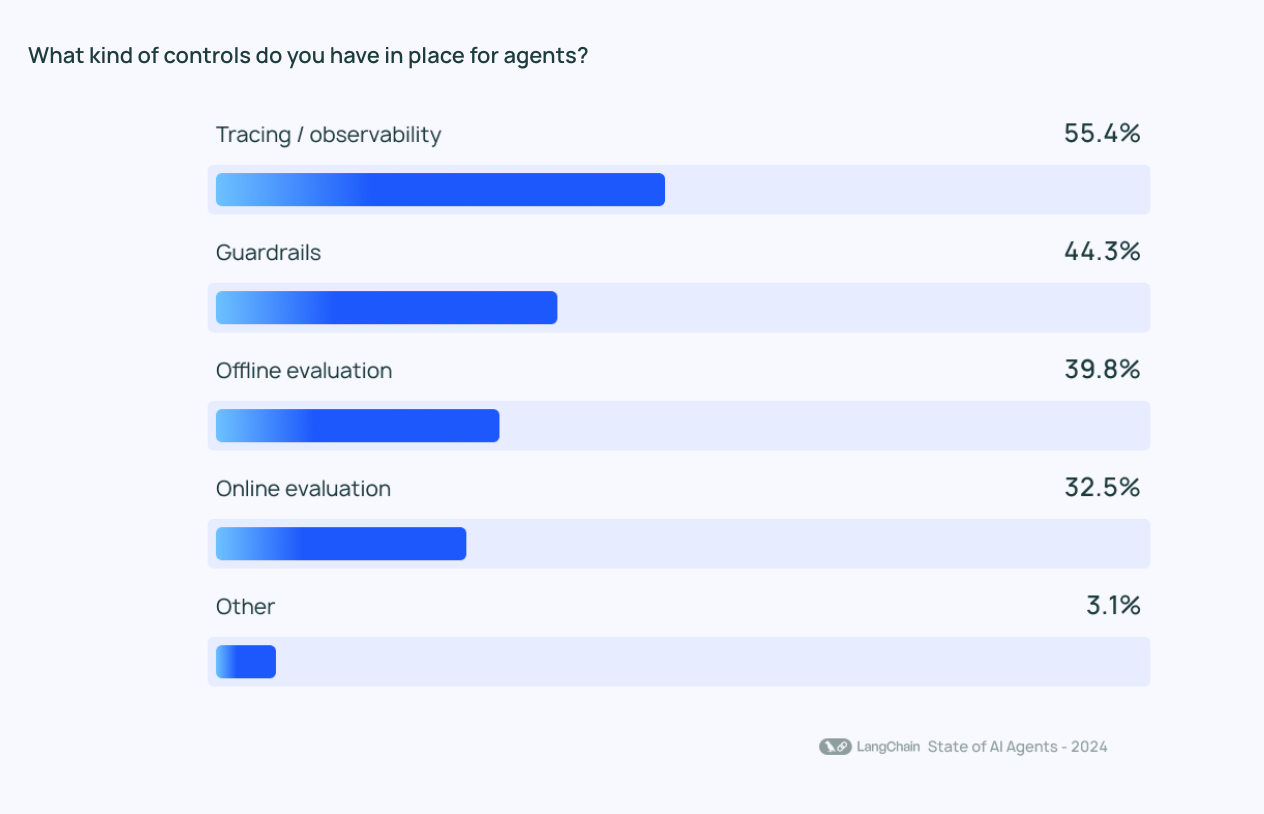
Leadership Alignment with Workforce and Customers
TL;DR → There’s a gap in perception that leaders should mind. Many executives underestimate the readiness and willingness of both their employees and customers for AI.
Employees are using AI more than some leaders think, and customers will use AI if it’s helpful.
At the same time, leadership commitment is critical: employees trust leaders to guide AI strategy, and customers trust brands to implement AI responsibly.
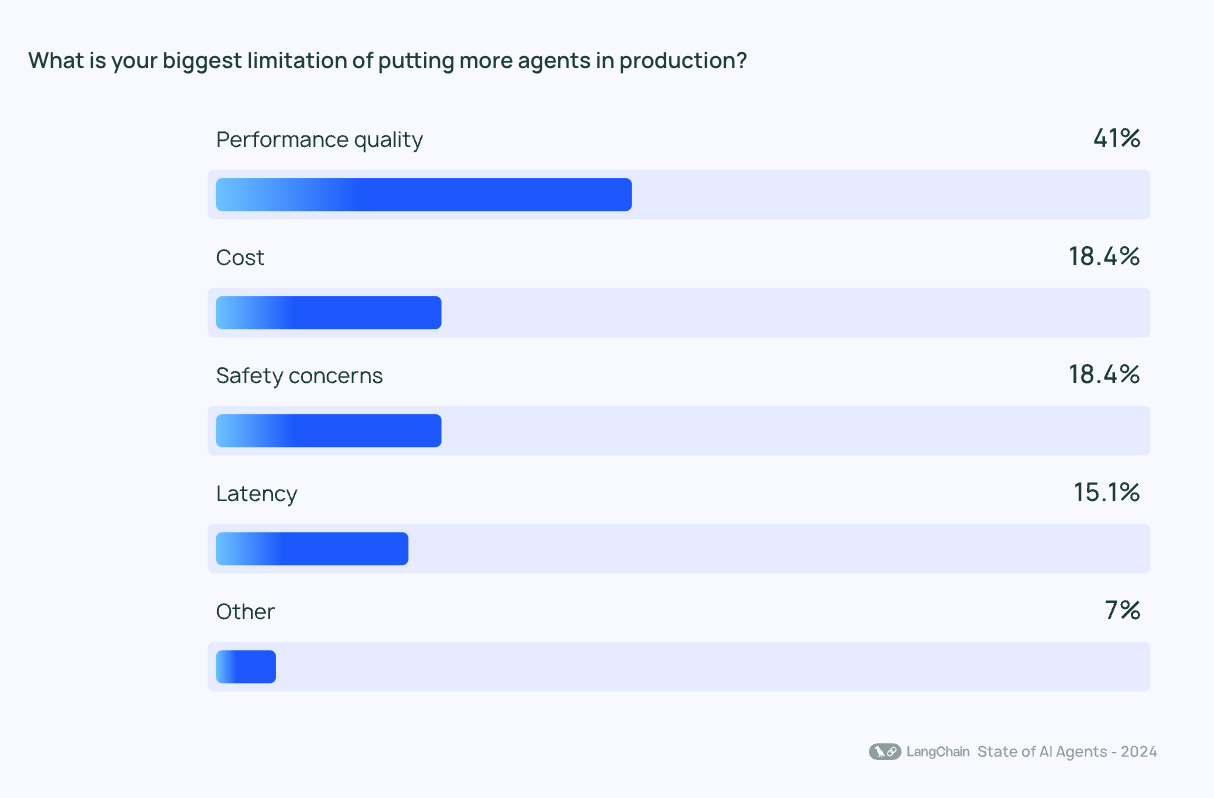
💡 Insight: It’s important for business leaders to actively champion AI adoption in a way that aligns with these preferences. That means not only investing in the technology but also visibly addressing the human side, like training employees, communicating openly about AI plans, and setting an example of using AI tools in one’s own workflow.
‼️ Action: Ensure your organization’s AI adoption is customer-centric and employee-informed. Solicit feedback from employees on which tasks AI could improve, and involve them in pilot programs (this boosts buy-in and yields practical insights). Likewise, gather customer feedback on AI features. For instance, after a chatbot interaction, ask the customer if it resolved their issue or how comfortable they felt.
In short, aligning tech deployment with human preferences will accelerate adoption and amplify the growth and efficiency gains that AI agents can deliver in 2025 and beyond.
Next steps: Deploy your own AI chatbot in minutes
Here’s how you can deploy a fully-trained, customizable AI chatbot on your website in under 10 minutes with Big Sur AI 👇
- Sign up on Big Sur AI's Hub (link here).
- Enter your website URL. Big Sur AI will automatically analyze your site content.
- Customize your AI agent. Set up specific AI actions and decide where the AI agent will appear on your site.
- Launch and monitor. Your AI agent will be live in minutes, and you can track performance with real-time analytics.

Read more:
- The top AI agent platforms for 2025
- Best AI tools for customer support
- Best AI tools for e-commerce
- Best AI tools for SaaS websites
Sources:
- Proprietary data from Big Sur AI’s platform and customers
- McKinsey
- Botpress
- Warmly
- Deloitte
- Salesforce
- Plivio
- Zendesk
- SurveyMonkey

